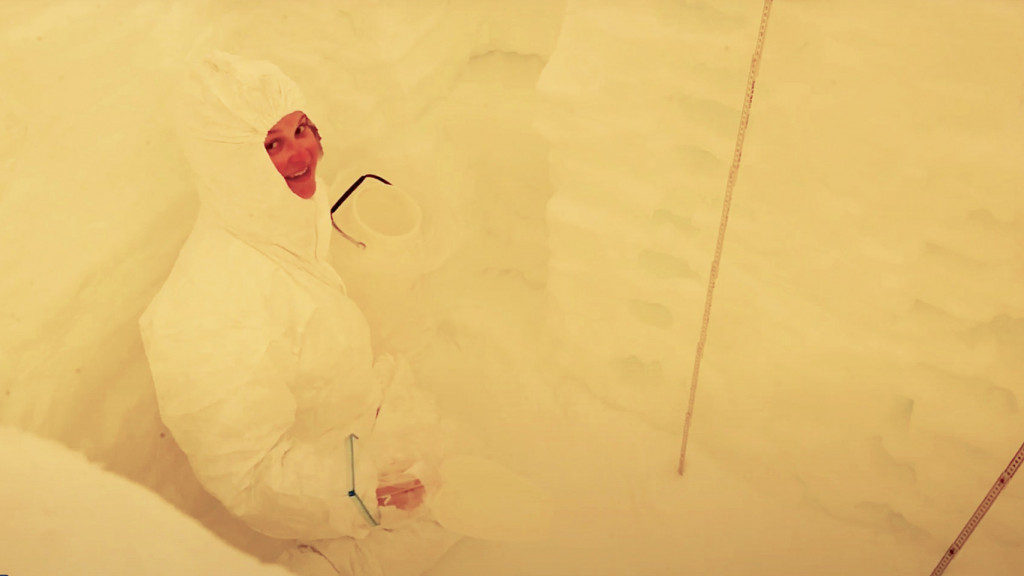Entering the Home Stretch
Last week most of the scientists and several of the crew headed home from the Princess Elisabeth Antarctica, having accomplished their scientific objectives for this season. Only a core crew and one scientist will stay until the end of the season.
A successful season for science
From the ExPoSoils project, Valentina and Björn were able to take microbe samples from all the target sites the project had identified. They even had time to return to a few sites to take more samples after a few weeks had gone by. The HYPSTAR radiometer Quentin had installed at a number of sites also took solar radiation measurements for a few weeks before being repatriated. Quentin also managed to set up several time-lapse cameras that will take occasional regular photos of the sample sites until the scientific research team returns next year.
Paula and Sibylle also had a good season working for the PASPARTOUT project. Paula’s automatic volatile organic compounds sampler on the roof of the station is running well. The IPF crew still at the station will keep an eye on it until the end of the season, but it will be left at PEA over the winter to collect samples during the eight months the station is uninhabited.
During her trip to the coast at the end of January, Paula successfully set up an active snow sampler to collect snow particles over the upcoming austral winter, while Sibylle managed to take several snow samples from the two 2-metre deep snow pits she dug at the coast. The deeper the snow sample, the further back in time the snow (and the atmospheric particles attached to the snow) originally fell.
The samples Paula and Sibylle took have been shipped to Belgium, where particles trapped in the snow will be analysed to determine atmospheric circulation patterns over Antarctica and from where these air masses that reach Antarctica originate.
Sibylle will be interviewed by Belgian TV station RTB in the coming weeks, so look out for her explaining her work in an upcoming report!
Although he had a few technical issues to overcome, Eric Rignot was able to complete his radar transects along the King Baudouin Ice Shelf, and Brandon helped him set up an automatic weather station to monitor weather conditions on the ground over time to help determine surface mass balance of the ice in the area for the RINGS project.
And even though it required a few return trips during their last week at the station, Simon and Nico completed their maintenance of the automtic weather stations in the PEACE project, making sure they will continue to collect weather data over the winter months to contribute to weather and climate modelling in the Queen Maud Land region or East Antarctica.
A quieter station
The station is nwo a lot quieter than it was just two weeks ago. Brandon is the only scientist still at the station along with about a dozen IPF crew. Brandon will continue to take wind speed measurements for his research project and help out aroudn the station until it’s time to leave.
Meanwhile, Expedition leader Alain Hubert and the remaining engineers, technicians, plumbers, and mechanics are slowly starting to prepare the station for overwintering.
Several tasks need to be completed before leaving, including making sure the software in the programmable logic circuit is up to date and able to respond to any changes in energy production during the austral winter, not to mention accept commands via satellite from Belgium, as the station is run remotely for eight months.
It also means slowly preparing the newly installed water treatment system for shutdown, which includes draining the pipes and tanks of the new system.
And of course the mechanics are doing final maintenance on all the vehicles before storing them at the winter park.
It’s amazing how quickly the season has gone by! It will soon be time to say au revoir to the Princess for eight months.

